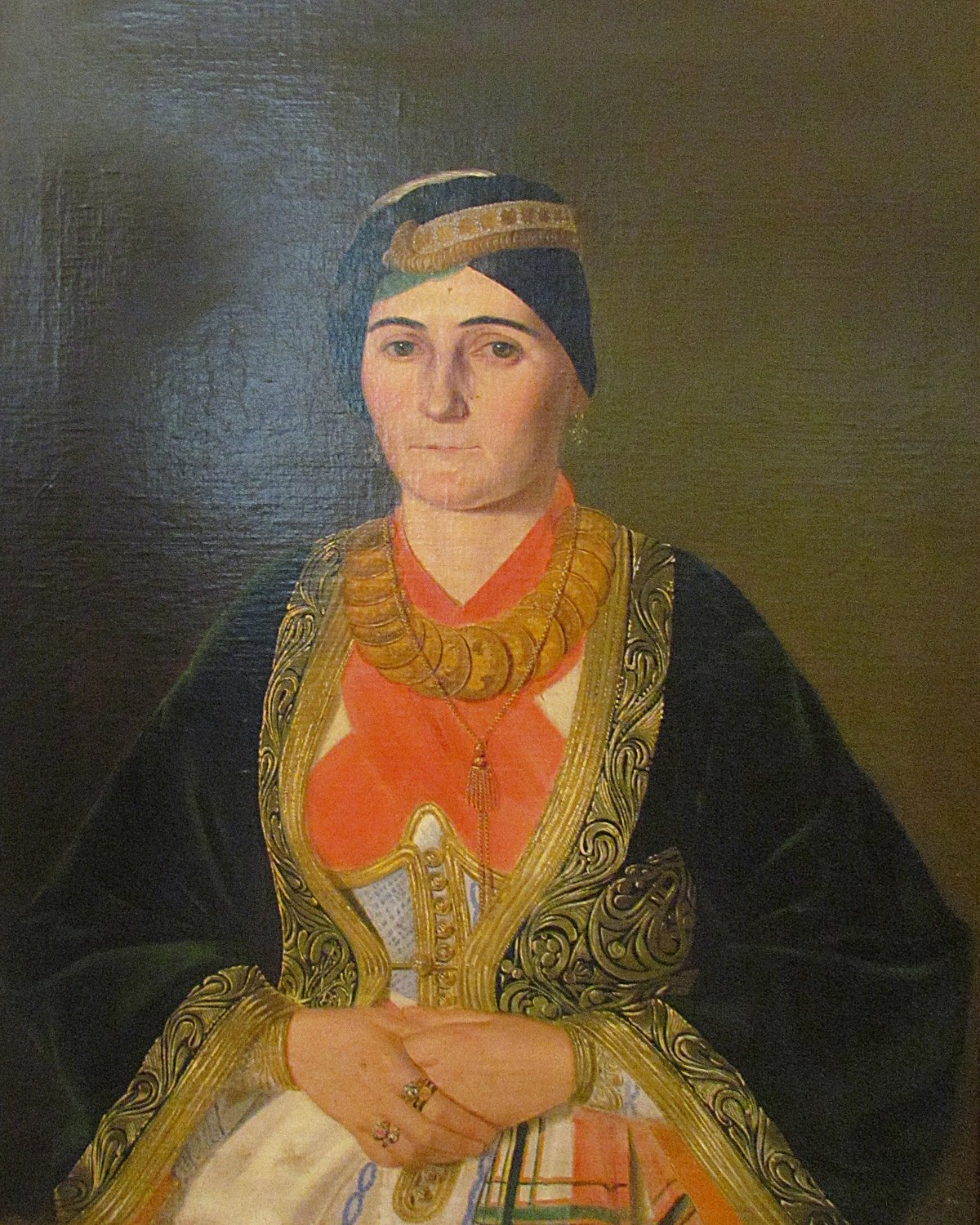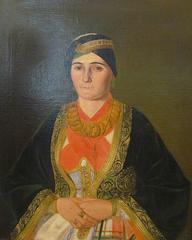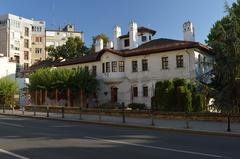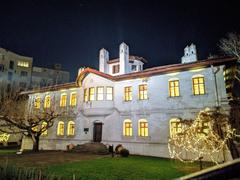
Princess Ljubica Residence Belgrade: Visiting Hours, Tickets, and Historical Significance
Date: 14/06/2025
Introduction
Nestled in the heart of Belgrade’s historic Kosančićev Venac district, the Residence of Princess Ljubica (Konak Kneginje Ljubice) stands as a testament to Serbia’s 19th-century national awakening and architectural evolution. Commissioned by Prince Miloš Obrenović between 1829 and 1831, this residence masterfully blends Ottoman-Balkan traditions with emerging European influences, reflecting the complex sociopolitical transformation of Serbia during its transition from Ottoman rule to modern nationhood.
Today, the residence operates as a museum under the Belgrade City Museum, preserving over 450 artifacts that illuminate the domestic life, artistic tastes, and social customs of Serbian nobility in the 1800s. Its permanent and temporary exhibitions, immersive programs like “A Coffee with Princess Ljubica,” and cultural events make it a vibrant hub for history enthusiasts, architecture lovers, and travelers alike. This guide provides practical visiting information, historical context, and tips for making the most of your visit.
For official updates and planning, consult the Belgrade City Museum, Dvorci Srbije, and Belgrade Card websites.
Table of Contents
- Historical Background
- Visiting the Residence: Practical Information
- What to See: Key Exhibitions and Highlights
- FAQ
- Conclusion
- Sources
Historical Background
Origins and Construction
The Residence of Princess Ljubica is a rare surviving relic of early 19th-century Serbia, commissioned by Prince Miloš Obrenović and designed by Hadži Nikola Živković, one of the first modern Serbian architects. Built between 1829 and 1831, it was intended as a private home for Princess Ljubica and their children, notably including future rulers Milan and Mihailo (beotura.rs, dvorcisrbije.rs).
Strategically situated near the Cathedral Church and Old Palace, the residence was originally surrounded by a walled garden and overlooked the Sava River. Its location and grandeur symbolized the rising prestige of the Obrenović dynasty (belgradecard.rs, wikipedia).
Architecture and Interior Design
The residence epitomizes a harmonious synthesis of Ottoman-Balkan and European architectural elements. The layout features the characteristic divanhana (central bay-windowed sitting room), thick walls, and spatial division between public and private areas, reminiscent of Ottoman domestic traditions. Facades, rooflines, and decorative details such as semicircular bay windows and pilasters reflect European neoclassical influences (dvorcisrbije.rs, tob.rs).
Key interiors include:
- Princess Ljubica’s Room: Once the most luxurious, featuring a rare 19th-century hamamcik (small bath) with original murals.
- Divanhane: Spacious sitting rooms on both floors, central to family and public gatherings.
- Rooms in European Styles: Including Biedermeier, Alt Deutsch, Rococo Revival, and Second Empire, furnished with original or period-appropriate pieces (myforevertravel.com).
Historical Role and Transformation
While intended as a royal court, Prince Miloš rarely resided here due to Ottoman oversight. Princess Ljubica and her children lived in the residence until the dynasty’s temporary fall in 1842. Over time, it served various administrative purposes, mirroring Serbia’s shifting political landscape (beotura.rs). By the mid-20th century, the building was restored and declared a Monument of Culture of Exceptional Importance in 1979 (wikipedia), later opening as a museum in 1980.
Cultural and Symbolic Significance
The residence is more than an architectural landmark; it embodies the aspirations of the Obrenović dynasty and Serbia’s broader journey toward modernization, autonomy, and European integration. Its blend of East and West serves as a microcosm of Belgrade’s identity as a crossroads of civilizations (dvorcisrbije.rs). The museum’s exhibitions and cultural programs preserve and interpret this legacy for present and future generations.
Visiting the Residence: Practical Information
Visiting Hours
- Tuesday – Sunday: 10:00 AM – 6:00 PM
- Closed: Mondays and select public holidays
Hours may vary for special events or exhibitions—verify on the official website.
Tickets and Pricing
- Adults: 300 RSD (~€2.5–3)
- Students, pupils, pensioners: 150 RSD
- Children under 7: Free
- Guided tours: Additional fee; advance booking recommended
Tickets may be purchased at the entrance. Some online options are available via authorized platforms (planplus.rs).
Accessibility and Facilities
- Mobility: The ground floor is accessible for wheelchairs; upper floors are reached via stairs only.
- Restrooms: Available on-site.
- Photography: Allowed for personal use (no flash/tripods); professional shoots require permission.
- No café on-site: The garden offers a pleasant spot for a break; many cafés and restaurants are nearby (belgrade-beat.com).
Guided Tours and Special Programs
- Guided Tours: Offered in Serbian and English; provide rich historical and cultural insights.
- Special Events: “A Coffee with Princess Ljubica” features a curator in period costume and traditional Serbian hospitality.
- Educational Programs: Available for school groups and families with advance booking.
Directions and Travel Tips
- Address: Kneza Sime Markovića Street, Kosančićev Venac district
- Public Transport: Easily accessible by bus/tram; walking distance from Republic Square, Kalemegdan Fortress, and National Museum
- Parking: Limited street parking; public transport or walking recommended
What to See: Key Exhibitions and Highlights
Permanent Exhibition: “The Interiors of 19th-Century Homes in Belgrade”
- Authentic Rooms: Experience meticulously restored chambers, including the reception hall, dining room, bedrooms, and library.
- Period Furnishings: Explore original and period-appropriate furniture, decorative arts, textiles, and everyday items from the Obrenović dynasty and prominent bourgeois families.
- Art Collection: View 19th-century Serbian paintings and portraits that document the era’s elite and political figures.
Temporary Exhibitions & Cultural Events
- Rotating Exhibitions: Frequent displays on Serbian history, art, and culture.
- Recent Highlights: 2025’s “Models of the Most Beautiful Serbian Monasteries” showcased intricate models and replicas of medieval frescoes (belgrade-beat.com).
Interactive Experiences
- “A Coffee with Princess Ljubica”: A unique program where visitors enjoy coffee and Turkish delight while learning about 19th-century Belgrade through live storytelling (belgrademyway.com).
- Guided Tours: Enhance your visit with expert commentary and context.
Frequently Asked Questions (FAQ)
Q: What are the visiting hours?
A: Tuesday to Sunday, 10:00 AM – 6:00 PM. Closed on Mondays.
Q: How much are tickets and where do I get them?
A: Adults: 300 RSD; students/pensioners: 150 RSD; children under 7: free. Buy tickets at the entrance.
Q: Is the residence wheelchair accessible?
A: The ground floor is accessible; upper floors require stairs. Contact the museum for assistance.
Q: Are guided tours available?
A: Yes, in Serbian and English. Book in advance, especially during peak times.
Q: Is photography permitted?
A: Yes, for personal use (no flash/tripods). Professional photography requires permission.
Q: What nearby attractions can I visit?
A: Kalemegdan Fortress, Cathedral Church, National Museum, Skadarlija quarter, and more.
Conclusion
The Residence of Princess Ljubica is more than a museum—it is a vibrant portal into Serbia’s 19th-century heritage, showcasing the intersection of Ottoman and European traditions, the ambitions of the Obrenović dynasty, and the evolution of Belgrade’s urban and cultural landscape. With accessible pricing, central location, and immersive exhibitions, it is an essential stop for visitors seeking to understand Serbia’s journey toward modernity.
To maximize your experience:
- Check official resources for current hours and event schedules.
- Consider a guided tour for deeper insights.
- Use the Audiala app for audio guides and local tips.
- Combine your visit with nearby attractions for a comprehensive exploration of Belgrade.
Sources
- beotura.rs
- dvorcisrbije.rs
- belgradecard.rs
- wikipedia
- belgrade-beat.com
- myforevertravel.com
- belgrademyway.com
- planplus.rs
- stannadan.com
- tob.rs
- kasadoo.com










































































